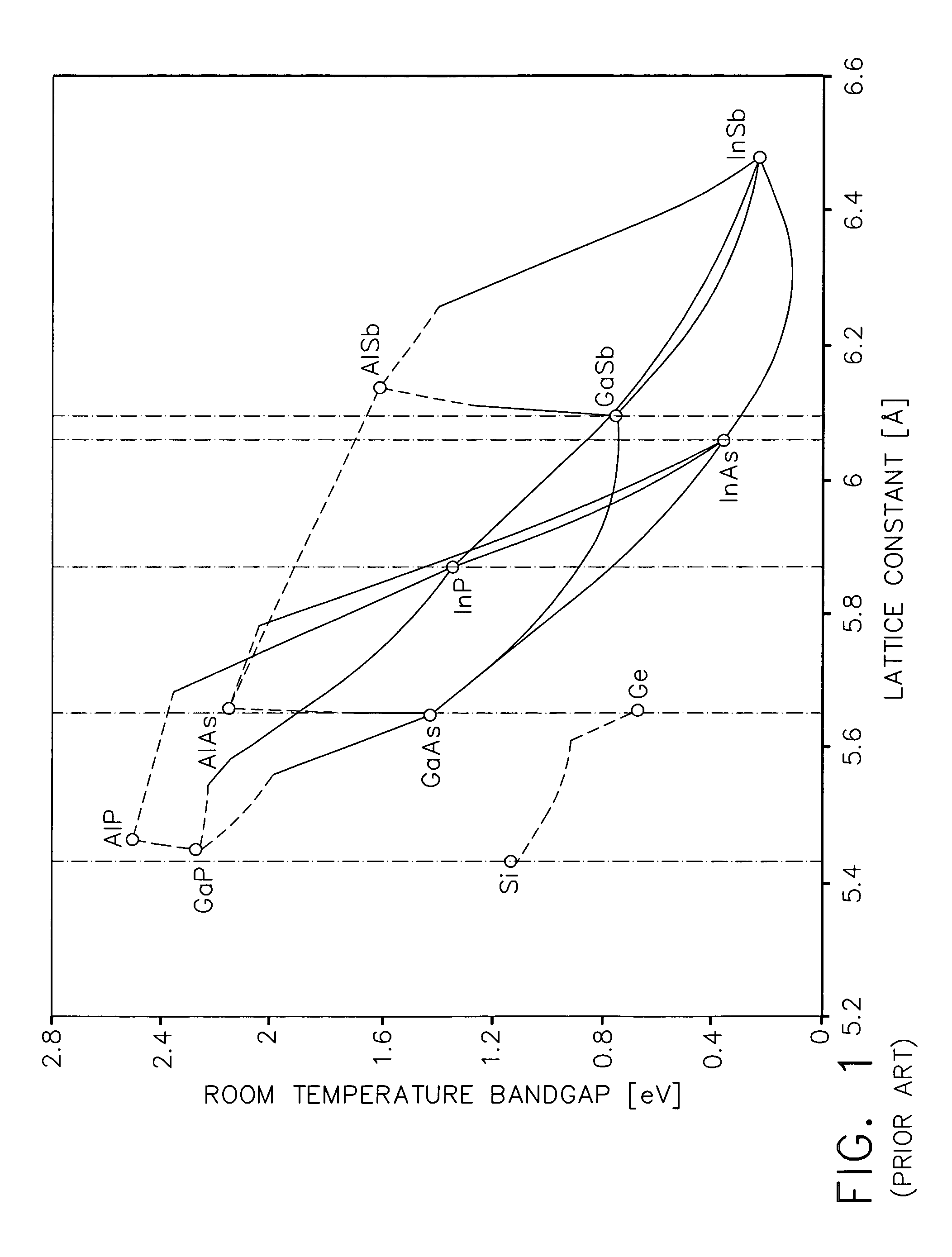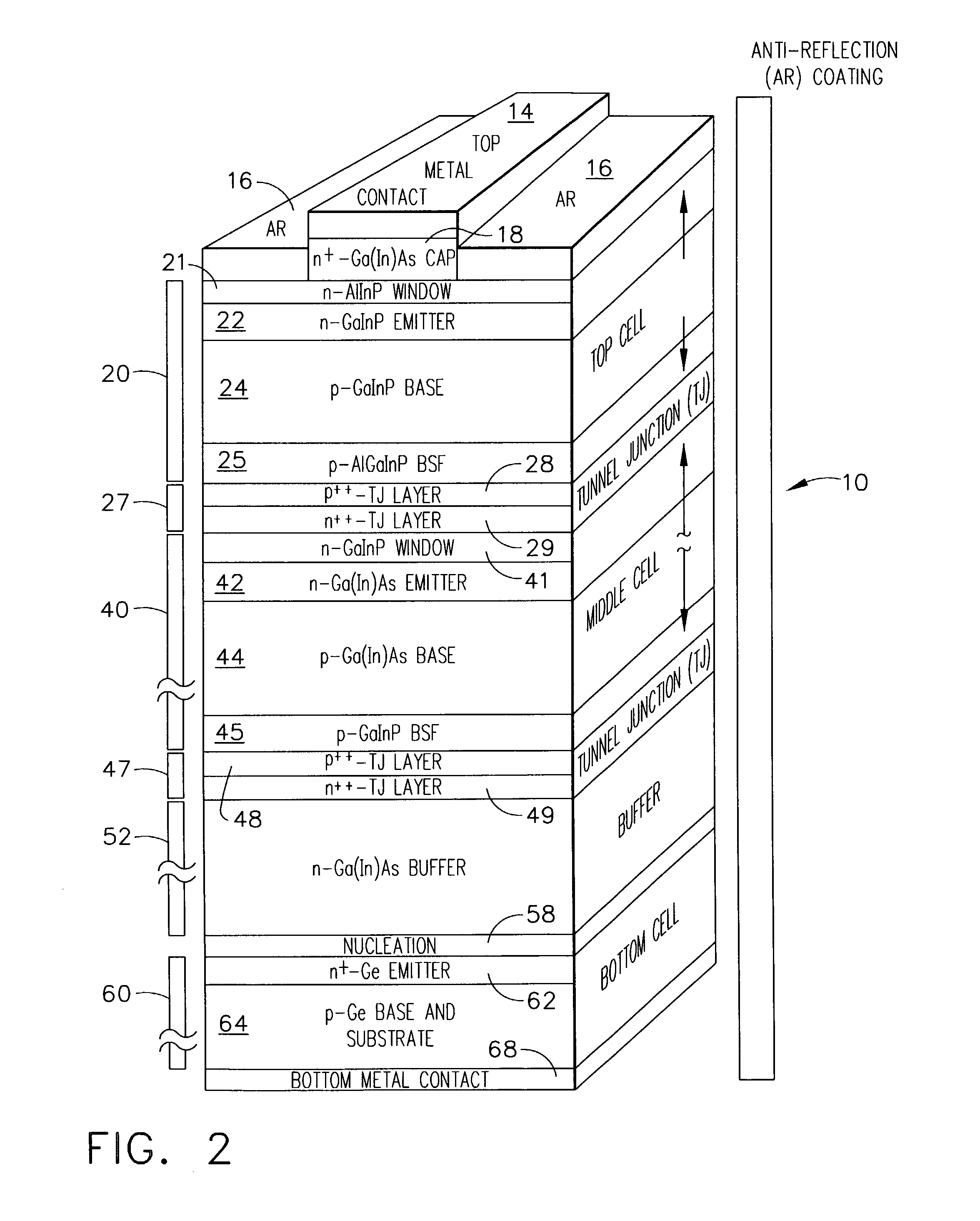Isoelectronic surfactant suppression of threading dislocations in metamorphic epitaxial layers
a technology of epitaxial layer and isoelectronic surfactant, applied in the field of isoelectronic surfactant suppression of threading dislocation in metamorphic epitaxial layer, can solve the problems of optoelectronic device cost, similar dilemma, etc., and achieve the effect of reducing the propagation of threading dislocations
- Summary
- Abstract
- Description
- Claims
- Application Information
AI Technical Summary
Benefits of technology
Problems solved by technology
Method used
Image
Examples
examples
[0082]Monolithic 2-junction metamorphic GaInP / GaInAs / Ge solar cells with a middle cell 40 indium content of 12% In and the middle-cell-active-only (isocells) were fabricated and tested as described below.
[0083]Using the structure depicted in FIG. 2, non-anti-reflective coated 1 cm×1 cm cells were fabricated and tested for the condition of Sb in the buffer layer 52 as compared to samples grown without Sb the buffer layer 52. The cells fabricated were in a dual-junction configuration with the top cell electrically deactivated for both conditions by growing the top cell layers with the same doping type (isotype top cell layers). The measured open-circuit voltage (Voc) voltage at maximum power (Vmp), fill factor (FF) and efficiency are shown in FIGS. 6a–c. Error bars shown are plus and minus one times the standard deviation for the entire cell population tested.
[0084]The addition of Sb to the buffer layer 52 resulted in an increase of approximately 100 mV in Voc as compared to the contr...
PUM
 Login to View More
Login to View More Abstract
Description
Claims
Application Information
 Login to View More
Login to View More - R&D
- Intellectual Property
- Life Sciences
- Materials
- Tech Scout
- Unparalleled Data Quality
- Higher Quality Content
- 60% Fewer Hallucinations
Browse by: Latest US Patents, China's latest patents, Technical Efficacy Thesaurus, Application Domain, Technology Topic, Popular Technical Reports.
© 2025 PatSnap. All rights reserved.Legal|Privacy policy|Modern Slavery Act Transparency Statement|Sitemap|About US| Contact US: help@patsnap.com



